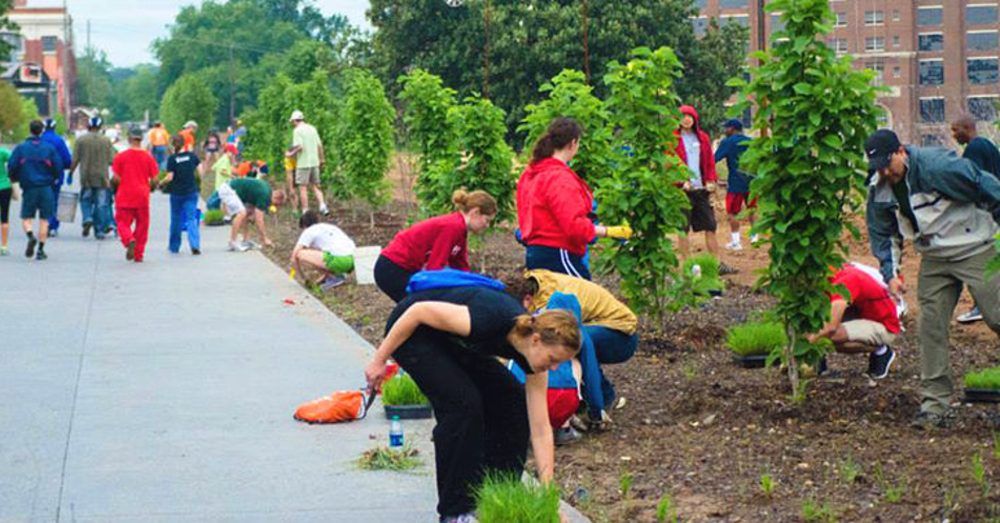
Atlanta’s Visionary Beltline is a Model for the Future of Urban Green Space
The Atlanta BeltLine is wiping out blight with 33 miles of multi-use trails along a historic rail line that encircles the city’s core. The ring of infrastructure is boosting environmental awareness in a metropolis that has been better known for suburban sprawl than parklands. Although other cities are turning abandoned tracks into greenways, the US$4.8 billion project connecting 45 neighborhoods offers unique lessons on urban renewal.
July 14, 2017 | Source: Ensia | by Judith Moen
The multi-use trail system is driving economic, environmental and cultural renewal — while saving the city millions of dollars.
July 14, 2017 — Brilliant shades of purple, yellow and orange beckon hikers and bikers to maturing meadows in the urban center. Parents stroll children along trails cooled by the fragrant breezes of native magnolia, dogwood, oak and long leaf pine trees. Families picnic near a 40-foot cascading waterfall.
This scene in the heart of Atlanta, Georgia, is a far cry from what it was nine years ago. Back then, trucks illegally dumped toxic chemicals, trash and tires here. Kudzu and other weeds flourished, forming ad hoc habitat for rats and copperhead snakes.
Now, the Atlanta BeltLine is wiping out blight with 33 miles of multi-use trails along a historic rail line that encircles the city’s core. The ring of infrastructure is boosting environmental awareness in a metropolis that has been better known for suburban sprawl than parklands. Although other cities are turning abandoned tracks into greenways, the US$4.8 billion project connecting 45 neighborhoods offers unique lessons on urban renewal.
Master Vision
It was a master’s degree thesis that sparked the movement to build the BeltLine. In 1999, Ryan Gravel, then an architecture student at Georgia Tech, envisioned and fleshed out a plan to build a modern transit system to replace a ring of decaying rail tracks that encircled the capital city.
It took several years of negotiating among politicians, city officials, community advocates, real estate developers, landscape architects and environmentalists to solidify a proposal. Then, in 2006, Atlanta established the Atlanta BeltLine, Inc., known as ABI, to lead a renovation funded by private donors and the city that includes bike trails, parks, water management systems, housing, electric transit, art sculptures and more. According to Gravel, the project is the most extensive of its kind in the United States.
“I wanted to make Atlanta a place I wanted to live in,” he says. “Who would have thought that this idea would take off? It has been fun, excruciating and rewarding.”
